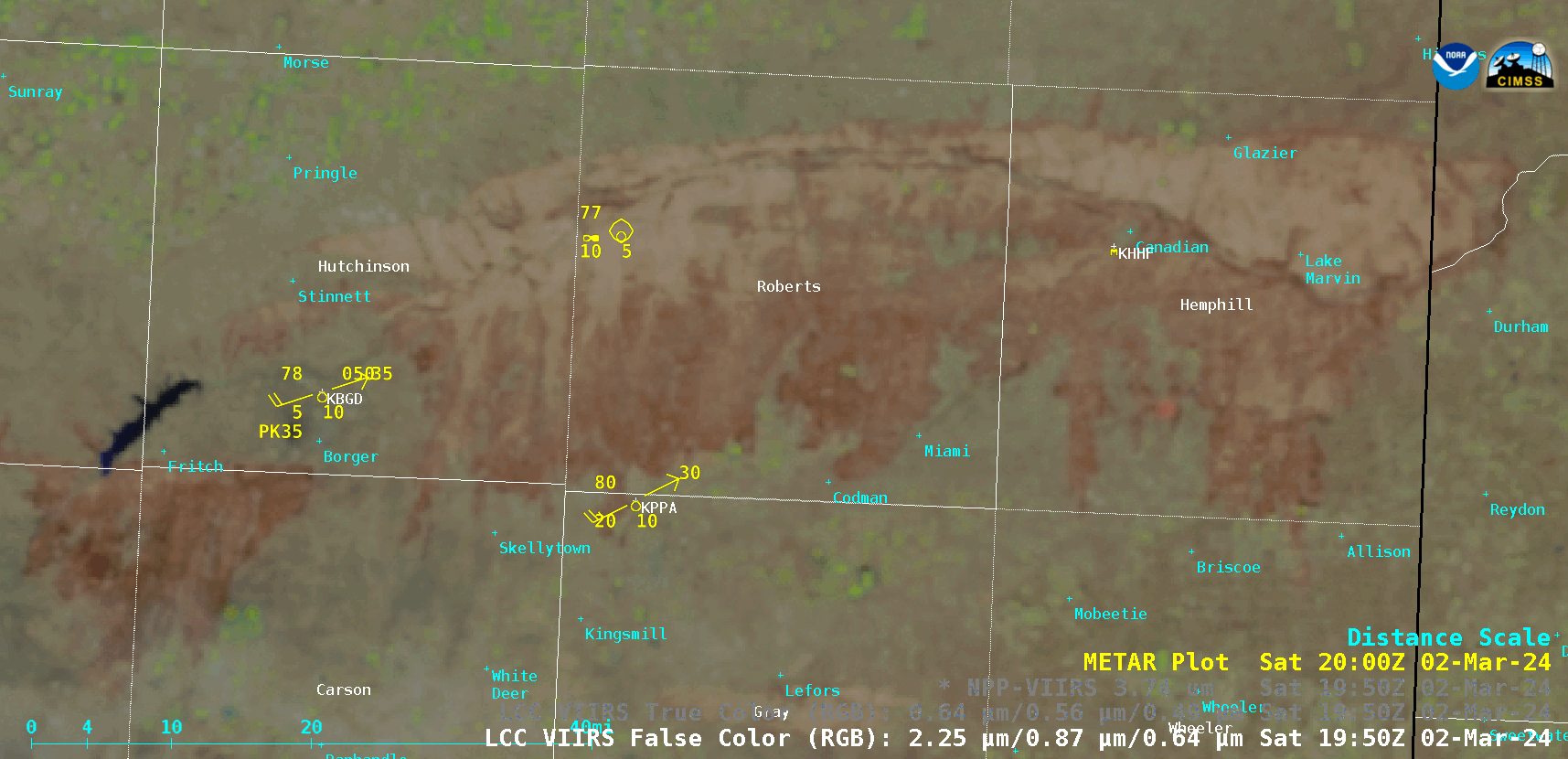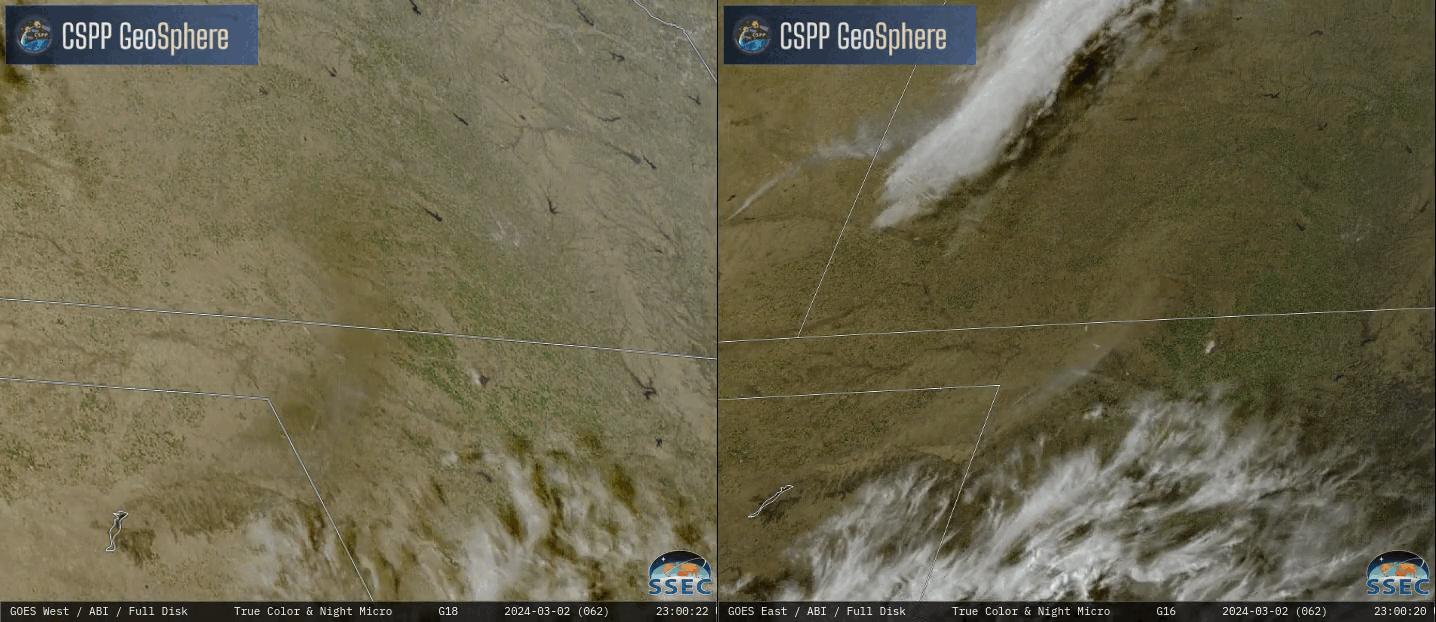Plume of blowing ash from the Smokehouse Creek Fire and Windy Deuce Fire burn scars in Texas

Suomi-NPP VIIRS False Color RGB and True Color RGB images, valid at 1955 UTC on 02 March [click to enlarge]

GOES-16 Ash RGB and Split Window Difference (10.3-12.3 µm) images [click to play animated GIF | MP4]

GOES-18 (left) and GOES-16 (right) True Color RGB + Nighttime Microphysics RGB images, from 1720 UTC on 02 March to 0030 UTC on 03 March [click to play animated GIF | MP4]


